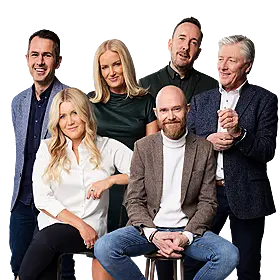Last week Virginia shooter Vester Flanagan shared footage from the killings he carried out on Twitter. During the summer a Russian website offered cash to people taking selfies with dead bodies - how did social media become a matter of life and death?
Why are we choosing to document major life events on social media, and what does that decision say about us?
Documenting death
Last week the man who murdered two of his colleagues at a Virginia television station posted videos of the shootings on Facebook and Twitter.
It sparked a movement among social media users not to share the content, to subvert Vester Flanagan's desire to be noticed.
Franklin County Investigator Captain Paul Caldwell told WDBJ7 - the station the two victims worked for - that the case spanned a number of crime scenes and would take weeks to investigate, something he said was complicated by the fact that evidence also exists on social media platforms.
"Each feed, each email, each text, whats on the computer, Facebook, any postings we'll look at, it's very time consuming".
During the summer, people were scandalised to learn of a Russian company that was offering cash for selfies taken with corpses.
Users were even directed to the funeral of a 13-year-old girl who had died in a car crash.
The people behind social network VKontake (In Contact) were appealing to a community of nearly 500 people who happily promote the fact that they have a unique attitude towards funerals and the commemoration of the dead.
Vkontake founder Alfred Polyakov offered to pay roughly €2 for a unique selfie with a corpse, with a grand prize of €65.
And a new website called Dead Social offers people the opportunity to leave messages for friends and family to be played in the event of their deaths.
The service will post the messages to Facebook and Twitter on the client's death.
Founder James Norris is a tech entrepreneur who admits the idea came from an obsession with death.
Dead Social has already won numerous start-up funding awards and its backers have appeared at several top tech conferences, including Dublin’s very own Web Summit.
Nothing new
Dr Eugenia Siapera, head of DCU's Social Media programme, says our desire to memorialise the dead and to share tragedy is a coping mechanism.
"Human culture has always tried to find ways to cope with death, and some of the most astonishing cultural works are dedicated to death and loss, from the pyramids and the Fayum portraits to pictures of the Pieta, to the Victorian memento mori (tradition of posed photographs around a corpse)."
Dr Siapera describes those efforts as "a kind of public performance and socialisation of death and loss."
Social media causes the idea of a 'normal' response to be weakened because there are very few cultural or ethical guidelines for users to follow.
Images from Vester Flanagan's footage of the shooting dead of his victims are not reproduced here, because they are offensive, but one image in particular was widely shared on social media.
New distributors of media are not bound by the same rules governing traditional media.
The university lecturer says what is really new is the way we can reproduce images of death and tragedy: "Now everyone can do it and they can do it their way. The social media way - with all its variety, fragmentation, horror, sorrow, vulgarity, glorification, kooky creativity and occasionally even farce - is our unique way of exorcising death and dealing with tragedy."
Occasionally though, it is used for good. As in the case of 3-year-old refugee Aylan Kurdi, who died this week crossing the sea between Turkey and Greece.
The boy's image was captured as his corpse was lifted from the beach he washed up on by a Coastguard worker.
Hundreds of thousands of people have shared Aylan's photograph.
Refugee groups hope it will bring a change in immigration policy.









